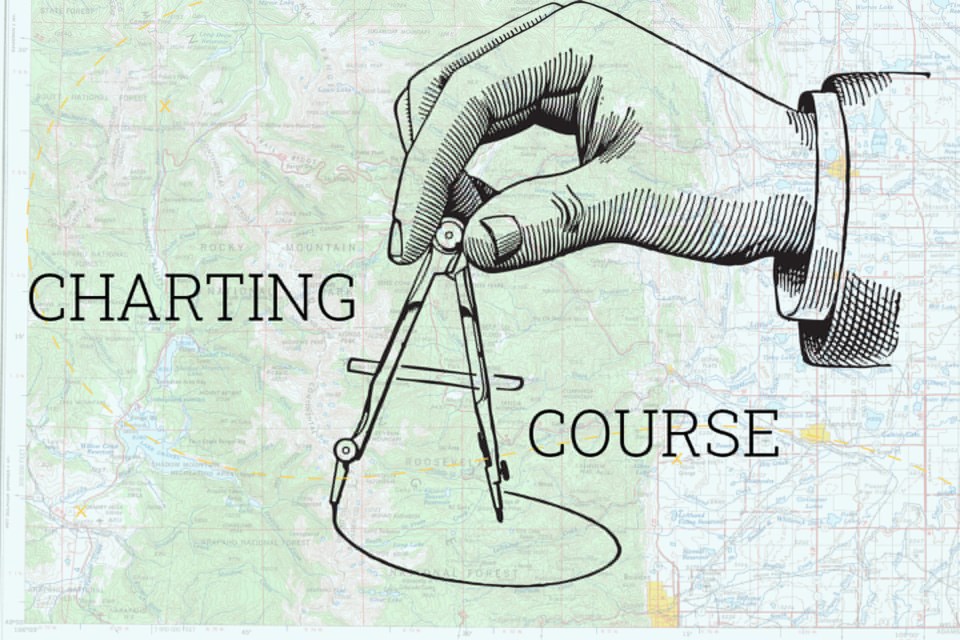My journey as a mathematics educator has been one of constant rediscovery.It began when I applied for my first full-time teaching position and learned that it would be a combination of math and science. This kick-started a furious study campaign for my official math endorsement to complement my teaching license in science. What I did not study for, however, was the delivery of math instruction. I was under the foolish assumption that teaching and understanding math was as straightforward as learning algorithms and substituting variables. But it means much more than that. It means to not only give students the map with which to plot a course through mathematics, but also the tools to create their own maps as they journey into new concepts and uncharted territories.
Throughout my first few years, I established a mathematical philosophy by observing master educators. I was fortunate enough to visit math teachers in other buildings with my instructional coach as a result of the district’s new teacher induction program. What I saw through their lens was a learning environment of safety, support, and empathy. This vision of mathematics education was integral to my own perception as a math teacher. I wanted to create a classroom that is a microcosm of our community, in which students could grow together and success is attainable for everyone.
I have been able to teach sixth through eighth grade math in my time as a middle school teacher. Seeing the full spectrum of middle-level mathematics gave me a deeper understanding of the sequential nature of our standards and the comprehensive flow from one grade to the next. This included assisting with our feeder high school’s Jump Start, a summer program to support the transition from eighth to ninth grade, for incoming freshmen. Knowing what our eighth graders would soon be faced with impressed upon me the crucial nature of our role. Middle school mathematics paves the way for many of the career paths that our students begin to explore in high school and beyond. My purpose now included becoming a navigator for the limitless opportunities found within my students’ futures.
Recently, my colleagues at Longs Peak Middle School and I have been utilizing standards-based grading practices. Rather than assigning activities or tasks for the sake of having scores in the grade book, each assignment has a clear connection to a standard within our unit of study and shows the progression of a student’s understanding. I have realized that middle school math should be an opener of doors, not a keeper of gates, and how we convert understanding into a numerical quantity has a very tangible effect on our students’ consciousness as learners and doers of mathematics. A genuine and accurate assessment of comprehension can give students a compass for which to direct their learning, rather than a roadblock.
My most profound discovery to date has been the most personal. For far too long, I considered myself to be a science teacher who also happened to teach math. My teaching license is in science, as is my bachelor’s degree. But this view has stunted my growth as I reflect on my educational travels. Only in the past few years, in the middle of my career, have I been able to shift my thinking toward a more holistic version of myself. Part of this shift occurred when I found a master’s program that serendipitously fit my needs. Enrolling in the STEM (emphasis on math) pathway at the University of Colorado Denver has exposed me to rich teaching strategies and vastly furthered my mathematical pedagogy. Another shift occurred when I was asked to help develop lessons for the middle school Jump Start program and design a new elective for our school. Others put their trust in me; I should be able to trust myself.
I am frequently grateful that I get to be a part of St. Vrain Valley Schools. Educators and district employees seamlessly work together to build a route for students from the primary level up to high school and beyond. Through this effort, mathematics in St. Vrain has become a living and breathing entity that allows students to construct mathematical knowledge, bolster their reasoning, and effectively collaborate with their classmates.
It is our journeys that define us. Each discovery, whether we are aware of it or not, lays the groundwork for what is to come. My journey has been filled with inspirational role models, encouragement from peers, and the indelible influence of my students, all of them remarkable. May we each have the same.



